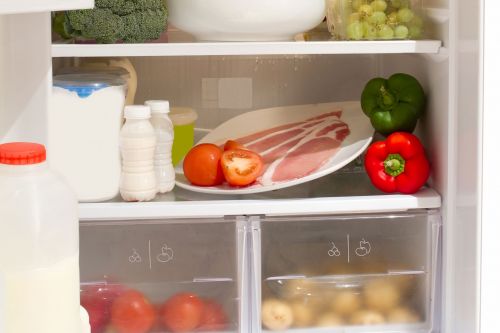
Domestic fridge temperatures studied in Europe to better protect consumers
Storing food at low temperatures slows down the growth of micro-organisms that cause food poisoning, while preserving its nutritional and organoleptic properties. While it is recommended to set the temperature of your refrigerator below 4°C, at what temperature is food actually stored? Thanks to a Europe-wide study conducted by scientists from the Salmonella and Listeria Unit of ANSES’s Laboratory for Food Safety, it is now possible to answer this question: the average temperature of domestic refrigerators in Europe is 6.4°C and 95% of the refrigerators studied have a temperature below 10°C.
These data were eagerly awaited in particular by producers of ready-to-eat foods, as they are required to test for bacterial growth under the conditions in which the food will actually be stored.
Limiting pathogenic bacteria in food
Bacteria that cause food poisoning can be naturally present in food. To limit the risks, it is important to ensure that their numbers remain below a defined threshold. This is particularly crucial for the bacterium Listeria monocytogenes, which causes listeriosis.
This bacterium is capable of multiplying at temperatures as low as 2°C. The higher the temperature, the faster it grows. “For certain categories of ready-to-eat products, the European regulations require that there be no more than 100 CFU (Colony-Forming Units) of Listeria monocytogenes per gram until the use-by date. In the absence of data on refrigerator temperatures in private households, the European Union Reference Laboratory (EURL) for Listeria monocytogenes previously recommended simulating storage at 12°C in the consumer’s home. But we weren’t sure that this value was realistic”, explains Adrien Asséré, Head of the Listeria monocytogenes EURL, whose mandate is held by ANSES’s Laboratory for Food Safety.
A review of actual refrigerator temperatures in Europe
To obtain real-life data to underpin its recommendations, the Salmonella and Listeria Unit conducted an extensive analysis of the scientific literature. Its scientists reviewed the results of 17 studies and 10 national surveys undertaken in 16 European countries: 14 EU Member States plus the United Kingdom and Norway.
No significant differences were found between the countries despite differences in climate. Temperature variability in the refrigerators studied depended primarily on the age of the appliance, the thermostat setting, the frequency and duration of door opening, and the fill rate of the refrigerator.
Do not confuse food testing with home storage!
In light of the results obtained, the EURL recommends that operators use a temperature of 10°C, which covers 95% of domestic refrigerators, as a reference for studying the shelf life of food in relation to the risk of listeriosis and with regard to all the pathogenic bacteria that can contaminate food. This new value has therefore been included in the technical guide on assessing microbiological shelf life, intended for food producers.
However, this reference temperature for manufacturers should not be interpreted by consumers as meaning that they can increase the temperature of their refrigerators, bearing in mind that the lower the food storage temperature, the slower the growth of micro-organisms and the lower the risk of infection. A temperature below 4°C stops the growth of most micro-organisms, including Salmonella, which is a major source of foodborne illness in Europe. Preventing the risks associated with food contamination requires action at every stage of the food chain, from production to the consumer’s plate.
What is listeriosis?
Listeriosis is a disease that is mainly caused by eating food contaminated by Listeria monocytogenes. Although relatively uncommon, it is a major public health concern due to its severity, as it has the highest mortality and hospitalisation rates of all the zoonoses (diseases that can be transmitted from animals to humans) monitored in Europe. The Zoonoses report of the European Food Safety Authority (EFSA), published in December 2024, also underlines that the number of listeriosis cases steadily increased over the period 2019-2023. Serious cases are mainly identified in pregnant women, people with weakened immune systems and those over the age of 65. These population groups are advised to avoid eating foods with the highest risk of contamination, such as ready-to-eat cooked delicatessen meats, certain cheeses, raw or undercooked meat, raw shellfish and raw fish.

Going further
The refrigerator and food hygiene
Maintaining refrigerated foods at a low temperature helps firstly to slow the growth of microorganisms, thus reducing the occurrence of foodborne illness, and secondly to retain the nutritional qualities of food. The effectiveness of the cold chain depends not only on the refrigeration temperature but also on maintaining it at a constant level. Read all our tips for optimum use of your refrigerator.


